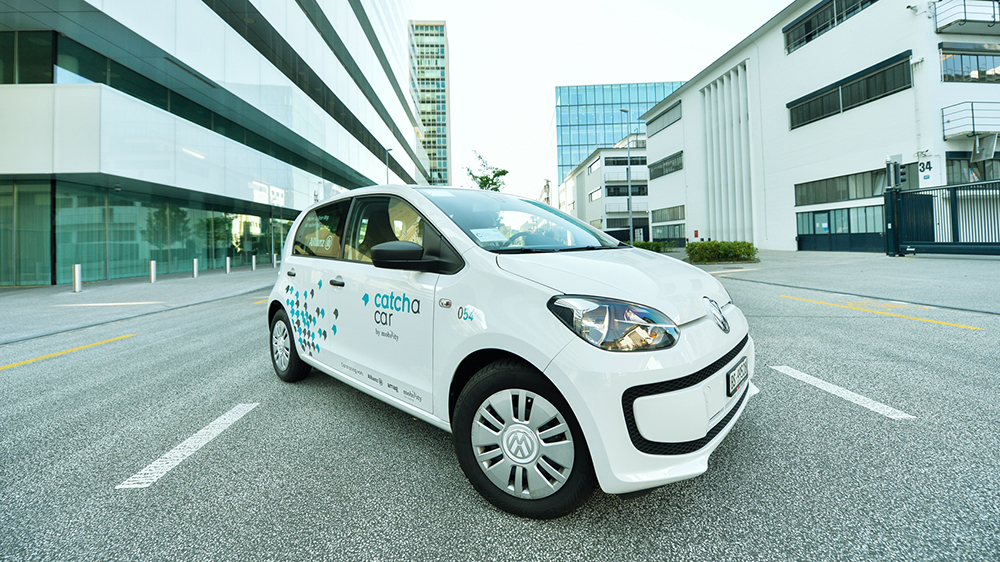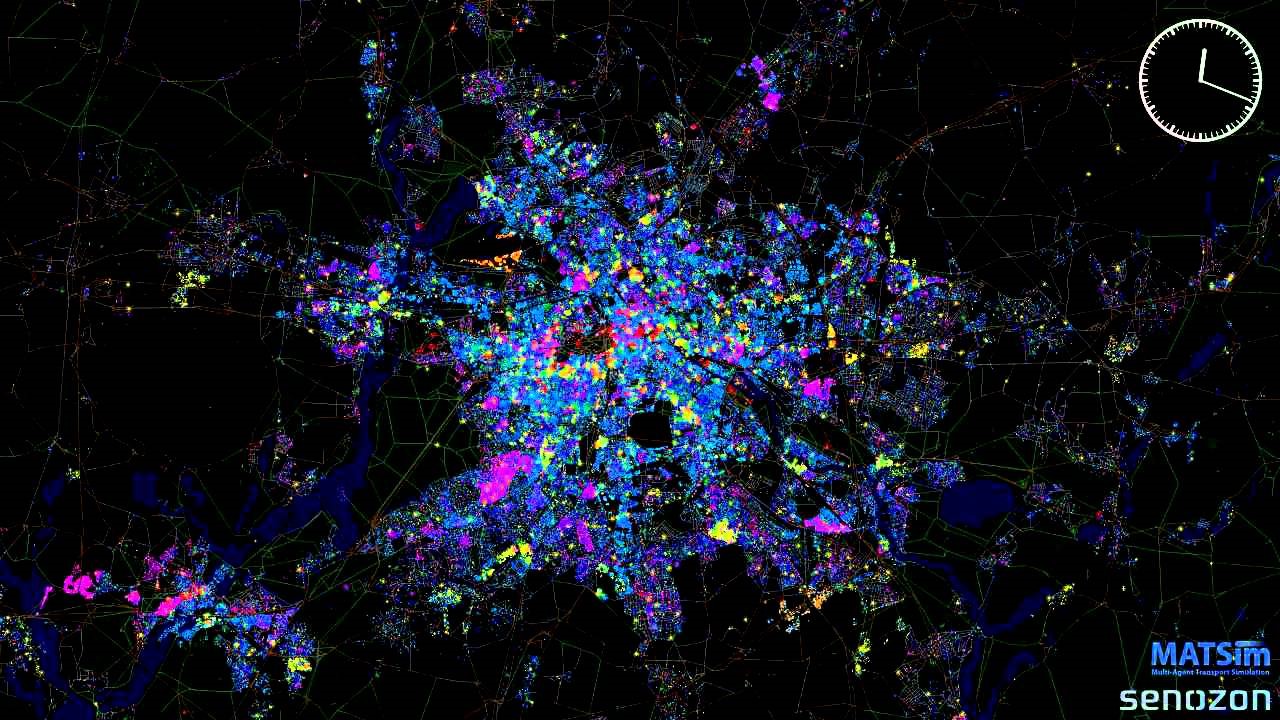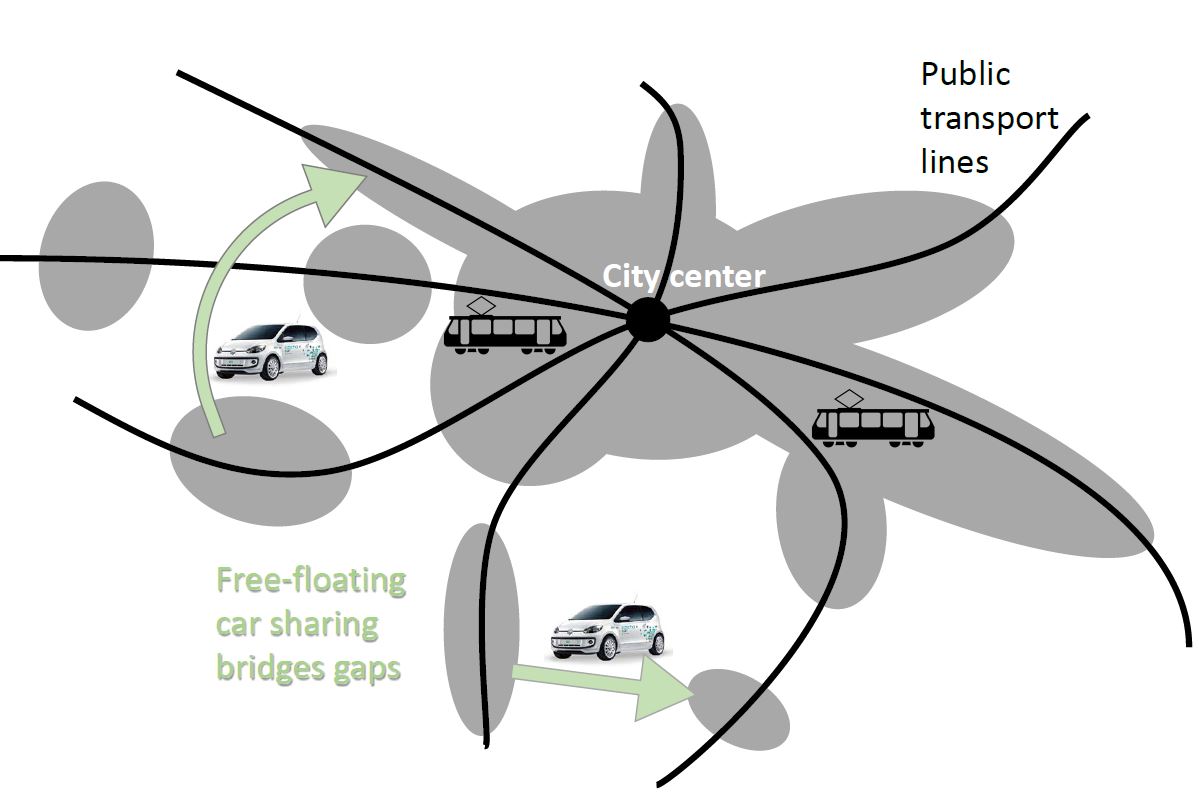Swiss people floating freely
Free-floating car sharing could be a flexible alternative to private cars. But does this concept work in Switzerland? The ETH Institute for Transport Planning and Systems investigated this question together with the car sharing company Mobility. Henrik Becker gives insights into this project.

Why is your research group interested in free-floating car sharing?
Free-floating car sharing is an interesting concept, because it is much more flexible than conventional station-based car sharing. It allows one-way trips and customers do not have to book well in advance. After the trip, the cars can be left anywhere within the defined service area. The smartphone app shows all available cars and their location. In 2014, Mobility introduced this service for the first time in Switzerland, called Catch a Car. Many questions came up, especially because the preconditions in Switzerland are different from other cities that already have free-floating car sharing services.
What are the specific Swiss questions?
Swiss cities are comparably small, parking space is very limited and many people already own a season ticket for public transport. The question is, how free-floating car sharing works in this context. How does it affect parking, car ownership and public transport? Mobility asked us to conduct a study in Basel to answer these questions.
What is special about your study?
In contrast to other studies, we carried out repeated quantitative surveys and used a smartphone-app-assisted travel diary. The real-time information on customer behavior that we collected is more reliable than conventional retrospective surveys. Our second specialty are the simulation models that we develop. Based on the customer behavior data, we can simulate the transport systems of entire cities.
What are the results of your study in Basel?
Firstly, our study clearly confirms that Catch a Car can reduce car ownership. One Catch a car replaces 3-4 privately owned cars. Secondly, the study shows that Catch a Car is not a threat for public transport. People use Catch a Car for trips where public transport is not available or not attractive, hence it bridges gaps in the existing network.
What are the next steps?
We are now carrying out a third survey wave in Basel and have started a similar study in Geneva. We want to find out who the long-term customers of car sharing are and in which situations they use this service. First results indicate that free-floating car sharing attracts different customers than station-based car sharing. Our goal is to have reliable data on user behavior that we can feed into our simulation tool. That will help us to build up knowledge and improve our models, especially with regard to the Swiss context. Our industrial partners will benefit from this knowledge and get to know their customers and markets better.
What role will free-floating car sharing play in future transport systems?
Our research shows that free-floating car sharing is a good addition to public transport. It makes it less attractive to own a car. However, car sharing alone will not solve the transport challenges of the future. The transport system will be a complex combination of different services and ways to travel, and free-floating car sharing may become an important piece in this puzzle.
Contact / Links:
Henrik Becker, ETH Institute for Transport Planning and Systems
Do you want to subscribe to ETH News for Industry?
external pageSubscribe to our newslettercall_made
Are you looking for research partners at ETH Zurich?
Contact ETH Industry Relations



